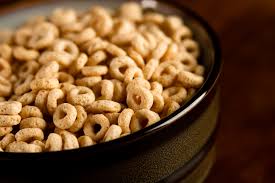General Mills (GIS +0.36%) introduced Lucky Charms exactly 55 years ago, and on Wednesday, it showed the markets that its luck may be turning. The packaged food giant beat profit expectations for its fiscal third quarter and raised guidance. That's in fairly sharp contrast to how the industry has been performing in recent years as consumers gradually shift their pantries away from highly processed foods toward somewhat healthier fare.
In this segment from MarketFoolery, host Chris Hill and Motley Fool Asset Management's Bill Barker discuss the strategies that have allowed General Mills to pivot toward what is looking like a rebound.
A full transcript follows the video.
This video was recorded on March 20, 2019.
Chris Hill: Let's move on to General Mills. It was on this day in 1964 that General Mills introduced Lucky Charms cereal, so maybe appropriate that they're reporting today. Shares of General Mills up about 4% this morning after third-quarter profits came in higher than expected. They also raised guidance for the full fiscal year. Look, I mentioned the cereal. Chances are, many people listening -- and by many, I mean the dozens who are listening -- have something that General Mills sells in their kitchen cabinets right now, when you think of all of the brands that they have across breakfast, lunch, dinner. Haagen Dazs, Progresso soup, Yoplait yogurt, Pillsbury, Betty Crocker. Of course, the big acquisition they had of Blue Buffalo pet food. A lot of brands that people are familiar with. Speaking of stocks that have been knocked around, the recent past has been pretty good for General Mills.
Bill Barker: In reference to the brands, I went to their page to remind myself, because there are so many of them, what there is in General Mills. I have to say, they start off with one of the most modest claims that I've ever seen for their brands. At the top of the page, this is their claim: "We know when we're at our best, people love our products." Many would just go with, "People love our products."
Hill: [laughs] Right.
Barker: [laughs] It's like, what about when you're not at your best?
Hill: Well, then people don't love them.
Barker: [laughs] You ever get a particularly weak box of Lucky Charms or something? Like, "Ugh, not at their best on this one."
Hill: Yeah, exactly. That actually makes me like General Mills more. We're going to talk about how companies message themselves in a moment. We'll get into this a little bit more with the impending IPO.
Barker: Did you have an actual question that I didn't answer there?
Hill: When you look at this business and consider the industry that they're in -- 2018, packaged foods, if it wasn't at the top of the list of the industries that you did not want to be invested in, it was certainly in the top three. As we talked about with FedEx, is the worst over? I'm wondering if General Mills is operating on such a level that it's like, actually, yeah, this is a pretty good stock to own for the near term, because whatever the stock has done in the past, this has always been a stable business. There are various points of time where you'd want to own shares, certainly stretches of time where it's like, "No, this is not something I'm interested in." I don't want to apply what's happening with General Mills to the entire package foods industry. Are they operating at a higher level than the competition they're dealing with?
Barker: What they're doing mostly is going with the playbook of the number of others at varying speeds, and that is, you've got your highly processed carbohydrate type of cereals being one, many other products that they've got, snacks and pizza.
Hill: Annie's, they also have Annie's organics.
Barker: Yeah. So, they've moved in their acquisitions toward the organic, the healthier stuff, and pets. That's where the growing part of the packaged food business is. In the case of Blue Buffalo, both, the combination of both organic and pets. Blue Buffalo is a higher-quality pet food. I don't know, it's got natural ingredients or something like that. I don't know. My dog doesn't seem to notice the difference. He's incredible, actually. The toughest part of the day is feeding him in the morning because he's very excited about any food there is, whether it's organic or not. It doesn't need to be Blue Buffalo, it can be Lucky Charms and he's pretty excited about that, too. I digress.
So, in terms of growth, you've got a low ceiling and a high floor. People don't change their food consumption patterns that quickly. And, across generations. You're buying cereals that your mom bought for you, I'm sure.
Hill: Not Lucky Charms, per say.
Barker: You weren't allowed to have Lucky Charms. You weren't allowed to have sugary cereals, is what I remember.
Hill: It was rare. It was a rare commodity in my house.
Barker: Christmas?
Hill: Basically, yeah.
Barker: Anyway, they're taking all of the stable cash flows from those sorts of things. And rather than building and doubling down on what they're best known for, if cereals is what they're best known, it's going more toward the organic, natural, and pet stuff, which is the growing part of the packaged goods market.
Hill: Cheerios is on that list. I definitely had Cheerios in the house.
Barker: Wheaties?
Hill: Wheaties. I mean, come on, that's the stuff champions are made out of. That and little chocolate donuts.
Check out the latest earnings call transcript for General Mills.






